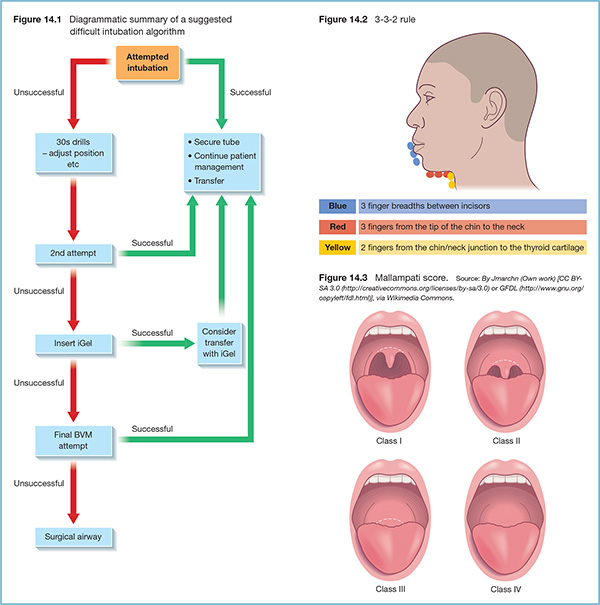14 Loss of an airway is a common cause of death for pre-hospital patients. Airway management is therefore a priority for pre-hospital care providers and, as previously explained, this can be achieved in a number of ways, ranging from simple manoeuvres, to the use of adjuncts and intubation. There are various definitions of a difficult airway, but for the purposes of this topic it is where a competent trained practitioner has difficulty with facemask ventilation, supraglottic airway device (SAD) ventilation, tracheal intubation, or all three. This is based on the American Society of Anaesthesiologists definition. Other definitions include “requiring more than 3 attempts to intubate” or “requiring more than 10 minutes to intubate”. Pre-hospital practitioners must be able to predict and manage both expected and unexpected difficult airways. The following is a very brief overview as no algorithm or explanation can account for all the possible complex factors involved in a difficult airway. Before selecting an airway management strategy, pre-hospital practitioners must assess how difficult they anticipate bag-valve-mask (BVM) ventilation, laryngoscopy, supraglottic device placement and cricothyroidotomy to be in a particular patient. The following mnemonic (MOANS) helps to predict those patients in whom BVM ventilation may be difficult.
The difficult airway

Assessing the airway

Full access? Get Clinical Tree








